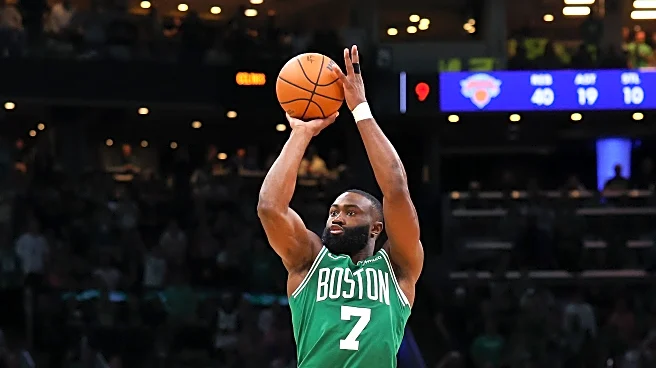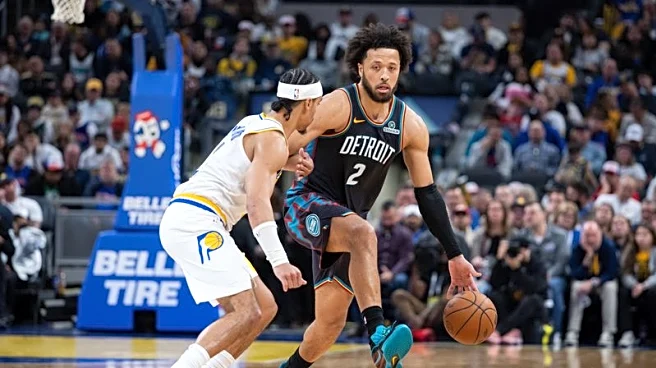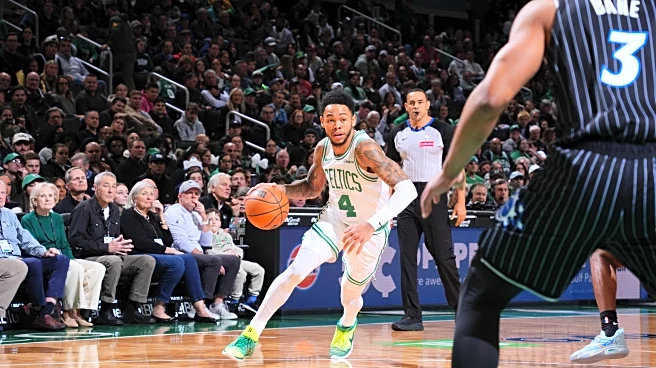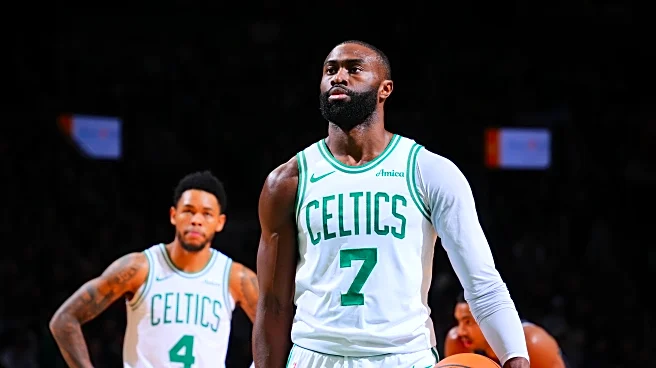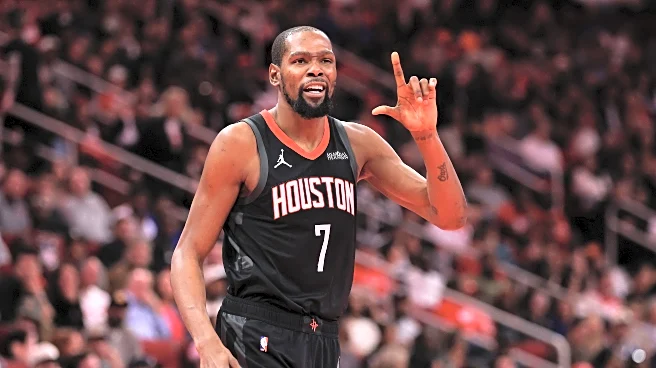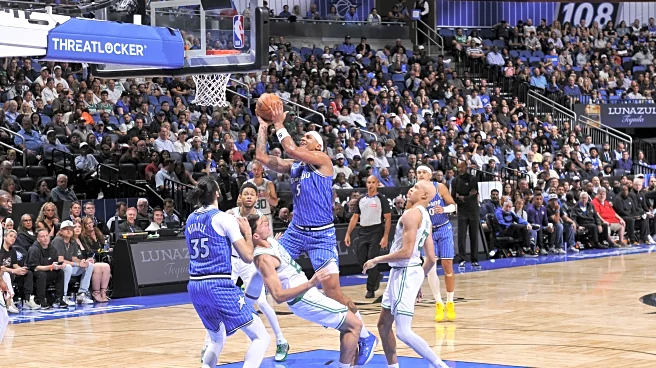BOSTON – No NBA player has had more success with the midrange shot than Jaylen Brown has this season. Perhaps relatedly, the Boston Celtics – without Jayson Tatum and four top rotation players from last year’s team – have somehow managed to have the league’s sixth-best offense.
It’s still early, but Brown is in the midst of his best scoring season ever; he’s averaging 27.9 points per game on 50.6% shooting, both career-highs. Through the season’s first 17 games, he’s eclipsed 35 points four times
– the same number of times he did through the entirety of last season.
And, a sizable chunk of the damage is coming from one of Brown’s favorite zones on the court: the midrange. The four-time All-Star is shooting a career-best 53.1% from the area between the paint and the three-point line, which the NBA officially considers the midrange.
No one else is doing it like him from there.
This season, 10 NBA players have attempted more than 50 midrange shots, a list that includes fellow midrange assassins Kevin Durant, Shai Gilgeous-Alexander, and Jamal Murray. From that exclusive group, Brown has been the most efficient, converting 53.1% of his 98 attempts.

Brown hasn’t always had such a green light on these shots, and he hasn’t always been this efficient. Last year, he shot 40% on 2.5 midrange attempts per game. The year before that, he shot 43.5% on 2.6 attempts.
(Of note, prior to the last two seasons, he used to be more effective in the midrange; in his sole All-NBA season in 2022-23, he shot 47.1% on 3.1 attempts. In 2021-2022, he shot 45.9% on 2.8 attempts, and in 2020-21, he shot 50% on 2.7 attempts).
But this season, Brown has more than doubled his midrange attempts to 5.8 a night.
“This year, we got to take whatever shot we can get, right?” Brown said. “So, I think everybody’s encouraging me to more be myself. But in the past, those shots have been discouraged more.”
The dying art of the midrange shot
Brown’s experience of being dissuaded from an overreliance on the midrange shot is not unique. Basketball players at all levels are increasingly discouraged from shooting a lot of midrange jumpers, as analytics continue to point to their relative inefficacy.
Chicago Bulls forward Matas Buzelis shared on the Young Man and the Three Podcast that his “Welcome to the NBA” moment was not something that happened on the court – it was how Bulls head coach Billy Donovan reacted to a standard baseline midrange shot that Buzelis attempted against the Oklahoma City Thunder in his rookie season.
“The next day, I was on the film,” Buzelis recalled. “And Billy was like, ‘Matas, take that shit and throw it out in the trash.’ I’m like, ‘Damn, that’s my shot.’ Everyone’s in there. Your heart, like, drops – like ‘Dang, I’m not going to shoot that again.’”
Billy Donovan is far from alone when it comes to discouraging midrange shooting – and the league’s ever-changing shot profile reflects that.
In 1996-1997, the first year of available NBA tracking data, 89 players attempted more than 300 midrange shots on the season (Michael Jordan led the way with 1202 attempts). Ten years later, that number declined to 65 players. And ten years after that, the number of players to attempt more than 300 midrange shots dropped to 28.
Last season, only three NBA players attempted more than 300 shots from the midrange: Shai Gilgeous-Alexander, Devin Booker, and DeMar DeRozan. At the same time, three-point shot attempts have continued to skyrocket — because the numbers just make sense.
At face value, the decline in middies is simple: jump shots are worth two points, and three-point shots are worth three. As such, if a player shoots 33% from three and 50% from the midrange, those shot attempts are of equivalent value.
So, if that player shoots any better than 33% from three-point range – or worse than 50% from the midrange – then statistically, the three-point shot becomes a higher-value shot than the midrange. (For reference, Jayson Tatum shot 39.6% from the midrange last season, and 34.3% from three. So, from simply looking at the analytics, the three-point shot is the better option for the Celtics star).
Still, NBA analytics have undeniable limitations
For one, some players maintain early midrange shot attempts help them get in a better offensive groove
“A lot of people look at the game analytically, and they look at the percentages or whatever, but for me, to get into a comfort zone on the floor helps make all the other shots so much easier,” Brown said. “Once you see one go in, once you see them go down, then the three-ball gets going.”
“It’s always been something that kind of can get me going. But the analytics won’t show the potential of somebody getting hot.”
Joe Mazzulla agrees with the notion that players’ individual rhythm can help influence shot profile. After all, there’s a reason why so many players across the league continue to attempt midrange shots, despite it not being an inherently high-value shot.
“Jaylen – nobody knows his rhythm, and his mindset throughout a game the way he does,” Mazzulla said, adding that there are lots of factors besides location on the court that indicate whether a shot is a good shot.
“There’s a time when that shot should be taken because the comfort of the player matters, and there’s a time when the comfort of the team matters more. It’s just a balance of the communication, of understanding that, but that’s important. At the end of the day, they’re the ones that are out there shooting, so they have to be comfortable with it.”
If you look at the numbers, you’ll find that lots of players have routinely shot in the 30s percent range, while continuing to take the midrange shot at a relatively high volume. Last season, Zach LaVine, Scottie Barnes, Pascal Siakam, Anthony Edwards, Jalen Green, and Tatum all attempted more than 200 midrange shots on worse than 40% shooting.
Sometimes, settling for a midrange is just a bad shot.
But, in other cases, those shot attempts are the result of late shot clock situations — the same shot could be a bad shot with 20 seconds on the shot clock might be the best available one with 5 seconds left.
Othertimes, it’s just what’s available; the midrange shot has become one of the looks that most NBA defenses are most comfortable giving up.
Los Angeles Clippers head coach Ty Lue said that reality has led him to wonder whether his players should be working on it more.
“As a coach, [we’re] always talking with the analytic guys like – why don’t we master the shots that teams are giving up?” Lue said. “If they give up midrange jump shots, like, why are we not working on that instead of the threes?”
But, for Brown, midrange practice has continued to be a mainstay, and he frequently works on the middie with the Celtics assistant coaches after practice.
Orlando Magic coach Jamahl Mosley explained that he prioritizes rim attempts and three-pointers over midrange shots. But, sometimes a clean look from the midrange is too good to pass up, because elite NBA defenses rarely concede the kinds of shots the offense is hunting.
“You want to get to the rim first, that’s a high priority,” Mosley said. “And then if you can get to the free-throw line, that’s the next priority. Then if you’re wide open for a three, you knock it down. And then you have to take what the defense gave you, because the defenses are so good. You’ve got to be able to take what the game gives you — and sometimes that is the midrange.”
Brooklyn Nets coach Jordi Fernandez pointed out that not all midrange shots are created equal.
“I’m okay with a pull-up in-rhythm, with, like, no contest or space,” he said. “But what I’m not okay with is the dribble, dribble, dribble, body contest shot.”
At the same time, it all depends on who is attempting the shot: “I always [tell] the guys, if the shot goes in, it’s always a good shot.”
Mazzulla said it’s impossible to evaluate shot quality in a vacuum.
“No one shot is the same,” he said. “Every shot has a context to it of what the couple shots were like as a team before, or what the shots were like for the individual before.”
The outsized role of the midrange shot in the clutch
There’s also the reality that midrange shots – albeit increasingly discouraged throughout a 48-minute basketball game – become especially pivotal in clutch time.
Like Mosley, Lue explained that typically, defenses are most willing to give up midrange shots because that’s what the math tells them to do: limit threes and layups first. So, in crunch time, when baskets are hardest to come by, the stars who can create exploit defenses’ weaknesses win games.
“I think it’s a lost art,” Lue said.
Brown and the Celtics have experienced the value of that art first-hand.
In Game 3 of the 2024 NBA Finals, the Celtics led the Mavericks by 2 points with just over a minute to play, when Brown got to his spot in the midrange and sank the biggest shot of his basketball career, rising over Tim Hardaway Jr. and hitting nothing but net.
Just like that, a nearly-blown 21-point Celtics fourth-quarter lead was salvaged in a critical Finals game.
“I hit a shot that kind of halted their momentum, that helped us carry out and get the win… it helped us ultimately win the championship,” Brown later reflected in a Hot Ones interview a few months after winning the title — and the Finals MVP.
More recently, in Game 1 of the 2025 NBA Finals with the Indiana Pacers trailing by 1 and the clock winding down, Tyrese Haliburton sank a midrange shot with 0.3 seconds left to secure the improbable victory.
“If you watch all the game-winners, or all the big shots in the playoffs or whatever, they’re always midrange jump shots to kind of seal the game or win the game,” Lue said.
Jaylen Brown’s midrange prowess has been key for the Celtics this season
This season, when Brown is on the floor, the Celtics’ offensive rating is 120.6. That would rank as the third-best offense in the NBA, trailing only the Houston Rockets and Denver Nuggets.
And, without Brown, the product on the floor has been completely different; the Celtics’ offensive rating drops to 110.5, which would make them the sixth-worst offense in the league.
It would be disingenuous to say that the success of the offense is mostly due to Brown’s midrange prowess. Brown himself has actually been most effective in the restricted area — he’s shot 72.2% from there this year. And, while he’s been the team’s most consistent source of offense, several other players have also been effective high-volume scorers this season (Anfernee Simons is averaging 14.4 points on 59.2% true shooting, for example, while Payton Pritchard is averaging 16.6 points on 56.9% TS).
Plus, offensive rebounding (the Celtics are 7th in the NBA) and taking care of the ball (no team averages fewer turnovers) has helped Boston create more possessions. That’s likely been the biggest factor for the Celtics’ offensive success.
But, to ignore the value of the midrange shot in the Celtics’ offense would also be disingenuous. Alongside Brown, Pritchard (45.5% on 33 attempts) and Derrick White (45.7% on 35 attempts) have both been effective from the midrange.
It’s impossible to assess what Brown’s offensive game would look like this season if his midrange shot hadn’t emerged as such a reliable weapon.
Would driving lanes be as open?
Would he have gotten to the line as much as he has? (Brown is averaging a career-best 6.4 free throw attempts per night)
Would he have been as well-positioned to score 12 straight 4th-quarter points for the Celtics in a win against the Magic on Sunday?
The analytics can try — but they’ll never fully answer those questions.
“The part that analytics doesn’t measure,” Brown said, “is the momentum of a game.”
